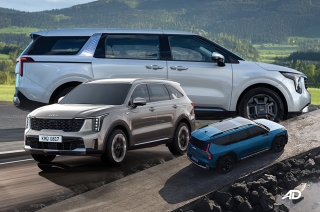
Driving too close to a vehicle in front of you can land you in some dangerous situations. It can often be the cause of rear-end collisions or accidents in general. This is why having a safe following distance between you and the vehicle in front of you is always a good practice to adhere to as it buys you more time to react. With that in mind, here are a few things you should know to help you determine a safe following distance.
Distance relative to the speed
Before we get started in helping you find a safe following distance there are a few things you need to keep in mind. One of the things you need to consider is your speed, the faster you travel the more space you will need to get your vehicle to stop. The next thing you need to consider is your reaction time. The more distance you have with the vehicle in front the more time you have to react. With that said, a good general rule of thumb to follow is the faster you travel the larger the distance you should leave between you and the car in front.
The three-second rule

The simplest way to keep a safe following distance between you and the vehicle in front of you is not by a measurement in terms of distance but one in terms of time. This is where the three-second rule comes into play. When the vehicle in front of your passes a fixed object count three seconds after it. If you pass the same point before you make it to your three counts this means that you are following too closely to the vehicle ahead of you. If you pass that same object on or after the 3 counts this means that you are at a safe distance. The great thing about this rule is that it adapts to the speed you travel. While the time between you and the vehicle in front doesn’t change much the distance does.
When should you increase your following distance?
Aside from adjusting your speed to adapt to the three-second rule, there are other times where you will need to increase the distance between you and the vehicle in front. Here are a few of the situations listed below:
-
Driving in bad weather conditions
When visibility gets low it can make it difficult for a driver to spot potential risks or to see if the vehicle in front is slowing down. Aside from this slippery roads can also hinder your vehicle’s ability to stop thus requiring you more space to bring it to a complete halt.
-
Heavy traffic
Remember to always give yourself a good amount of stopping room especially while you are in traffic. This could potentially save you and your vehicle from getting into a crash.
-
Entering or exiting a highway
When you enter or exit a highway you will need to increase the distance between you and the vehicle in front. This is because as you exit you will begin the process of slowing down. When you enter a highway you need to give yourself enough room to accelerate as well as give yourself enough space to safely merge.
-
Driving behind motorcycles or bicycles
Motorcycles and bicycles are far lighter than you and your heavy vehicle. This lets them stop makes them vulnerable as they can easily fall over. With that in mind, always give them enough space so that in case of an emergency you can properly stop your car.
So, what’s a safe following distance?

The answer to this question doesn’t exactly lie within meters of car lengths, it lies with time. Ideally, you should always try to maintain a 3-second following distance wherever possible. This gives you more time to react in case the vehicle in front slams on the brakes or hits another car. It also gives you more time to see the road ahead and scout for any hazards that you or the vehicle in front might have to face.
Latest Features
-
An all-electric future: The Porsche Macan Electric / Featured Article
Porsche’s Macan goes all-electric; it’s a new beast with an electrified heart, yet unmistakably Porsche in performance and spirit.
-
Which Kia should I buy? / Featured Article
We’re here to help you decide which Kia vehicle is best for you, whether it’s a sedan, crossover, or minivan.
-
Why Lynk & Co is a good option for luxury car buyers / Featured Article
Lynk & Co offers premium value for those exploring the luxury market.
Popular Articles
-
Electric Vehicles in the Philippines for under P1 million
Jerome Tresvalles · Aug 19, 2025
-
Top 3 Cars For Every Lifestyle—What Cars Are Right For You? | Behind a Desk
Caco Tirona · Apr 24, 2024
-
5 Tips to Maximize Fuel Efficiency
Jerome Tresvalles · Sep 09, 2024
-
Five driving habits that are draining your fuel tank
Jerome Tresvalles · Jun 24, 2025
-
Can engine braking harm your engine?
Jerome Tresvalles · Sep 11, 2025
-
Do electric cars even need maintenance?
Jerome Tresvalles · Oct 23, 2024
-
Best vehicles for an active outdoor lifestyle
Shaynah Miranda · Jul 25, 2024
-
How to drive different types of vehicle transmissions
May 23, 2024
-
5 easy ways to keep your car interior clean
Allysa Mae Zulueta · Nov 15, 2021
-
How to survive Metro Manila traffic
Earl Lee · Aug 16, 2022



